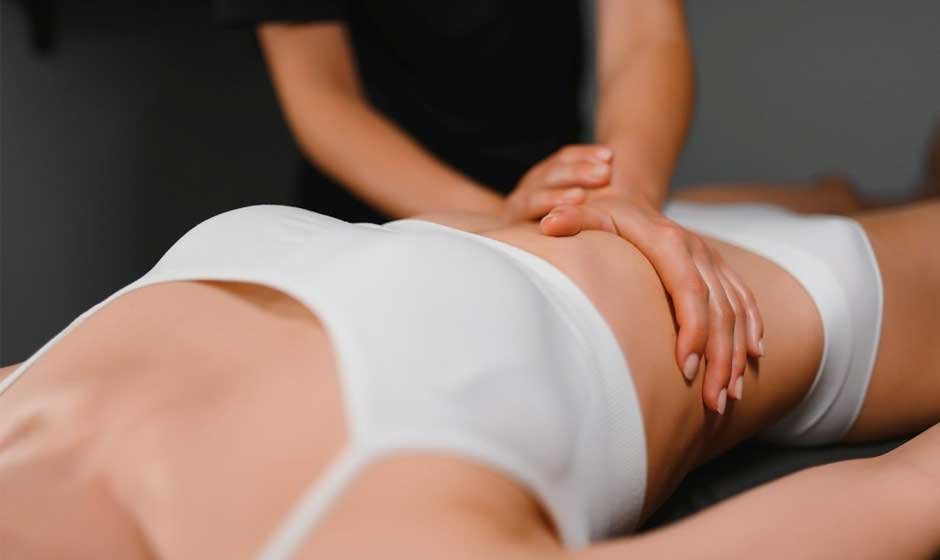Massage therapy is beneficial for people of all body types, but if you have a higher body fat percentage, you may wonder how it affects your experience. Does body fat change the effectiveness of a massage? Will it feel different? The truth is, massage can be just as effective—if not more so—for individuals with more body fat, but there are some factors to consider.
Contents
Does Higher Body Fat Affect Massage Effectiveness?
Massage works by manipulating soft tissues—including muscles, fascia, and skin—to improve circulation, relieve tension, and promote relaxation. While body fat sits between the skin and the muscles, it does not prevent a skilled massage therapist from reaching the deeper structures that need work.
However, there are some differences in how a massage might feel and how techniques are applied:
- Pressure Adjustments: More body fat may require deeper pressure to reach the underlying muscles effectively, but a therapist will always adjust based on comfort and need.
- Different Sensations: Some techniques may feel different due to variations in tissue density, but this doesn’t make them less beneficial.
- Heat Retention: Fat tissue retains heat more than muscle, which can make massages feel warmer and even more relaxing.
Benefits of Massage for People with Higher Body Fat
Regardless of body size, massage therapy offers a range of benefits, including stress relief, improved circulation, and muscle relaxation. If you have a higher body fat percentage, massage can be particularly helpful in a few key ways:
1. Improved Circulation
Fat tissue has fewer blood vessels than muscle, which can sometimes lead to reduced circulation. Massage helps stimulate blood flow, delivering oxygen and nutrients to tissues while flushing out toxins.
2. Reduced Muscle Tension and Pain
Many people with higher body fat also experience muscle tightness due to posture imbalances or carrying excess weight in certain areas. Massage can help loosen tight muscles, reduce pain, and improve flexibility.
3. Stress and Anxiety Relief
Massage lowers cortisol (the stress hormone) and increases serotonin and dopamine levels, helping to reduce stress, which can be beneficial for those dealing with weight-related concerns or emotional stressors.
4. Lymphatic Drainage Support
Higher body fat can sometimes contribute to fluid retention. Massage techniques like lymphatic drainage can help reduce swelling, improve circulation, and enhance overall well-being.
Massage Techniques That Work Well for Higher Body Fat
Certain massage techniques may be more effective depending on body composition. Some of the best options include:
- Deep Tissue Massage: Uses firm pressure to target muscles beneath layers of fat, breaking up tension and adhesions.
- Swedish Massage: A gentler approach that improves circulation and promotes relaxation without excessive pressure.
- Myofascial Release: Focuses on loosening the connective tissue (fascia), which can be beneficial for mobility and flexibility.
- Lymphatic Drainage Massage: Helps reduce swelling and fluid retention by stimulating lymphatic flow.
What to Expect During a Massage
If you have a higher body fat percentage and are new to massage, you may wonder what the experience will be like. Here are a few things to keep in mind:
Professionals like clinical massage therapy in Highland Park, IL, are trained to work with people of all shapes and sizes, ensuring that clients feel comfortable and their specific needs are met. If the pressure feels too light or too deep during your session, don’t hesitate to communicate with your therapist—they can adjust their technique to provide the best results. Additionally, depending on where you carry weight, certain positions, such as lying face down or face up, may feel different. Therapists are skilled in adjusting, such as using extra pillow support, to enhance your comfort and overall experience.
Tips to Get the Most Out of Your Massage
To maximize your massage experience, consider these tips:
- Communicate Comfort Levels: Let your therapist know if a technique feels too intense or not deep enough.
- Stay Hydrated: Drinking water before and after your massage helps flush out toxins and prevents soreness.
- Don’t Be Self-Conscious: Massage therapists are professionals who focus on muscle health, not body shape. Their goal is to help you feel better.
Conclusion
Having a higher body fat percentage does not make massage therapy any less effective—in fact, it can offer unique benefits, from improved circulation to stress relief. Whether you’re looking to relax, ease muscle tension, or improve flexibility, massage is a great option for overall wellness. The key is to find a skilled therapist, communicate your needs, and enjoy the healing benefits of massage.








